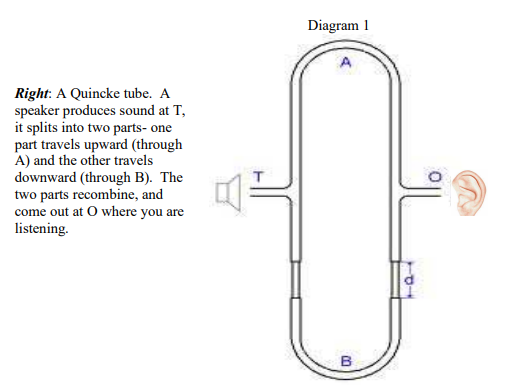A Quincke tube is a way to produce total destructive interference with sound by splitting one sound equally into two paths, and then recombining them. Suppose the speaker (at point T'in the diagram) produces a sound of frequency 1,637 Hz. If the length of the shorter tube is 0.772 m, what is the minimum length of the longer tube, in m, that will give total destructive interference?
A Quincke tube is a way to produce total destructive interference with sound by splitting one sound equally into two paths, and then recombining them. Suppose the speaker (at point T'in the diagram) produces a sound of frequency 1,637 Hz. If the length of the shorter tube is 0.772 m, what is the minimum length of the longer tube, in m, that will give total destructive interference?
Related questions
Question
Question in attachments

Transcribed Image Text:Diagram 1
A
Right: A Quincke tube. A
speaker produces sound at T,
it splits into two parts- one
part travels upward (through
A) and the other travels
downward (through B). The
two parts recombine, and
come out at O where you are
listening.
B

Transcribed Image Text:Refer to diagram 1.
Assume the speed of sound in air is 348 m/s.
A Quincke tube is a way to produce total destructive interference with sound by splitting one sound equally into two paths, and then recombining them. Suppose
the speaker (at point T in the diagram) produces a sound of frequency 1,637 Hz. If the length of the shorter tube is 0.772 m, what is the minimum length of the
longer tube, in m, that will give total destructive interference?
Expert Solution
This question has been solved!
Explore an expertly crafted, step-by-step solution for a thorough understanding of key concepts.
This is a popular solution!
Trending now
This is a popular solution!
Step by step
Solved in 2 steps
